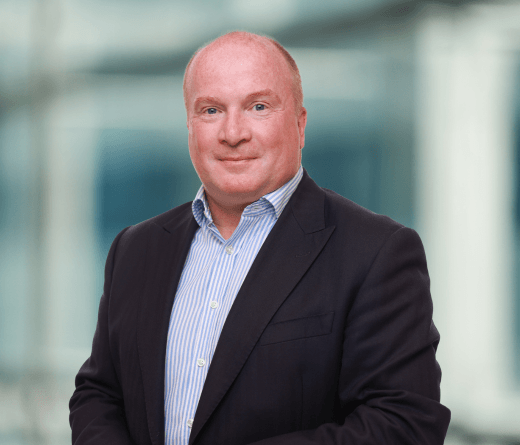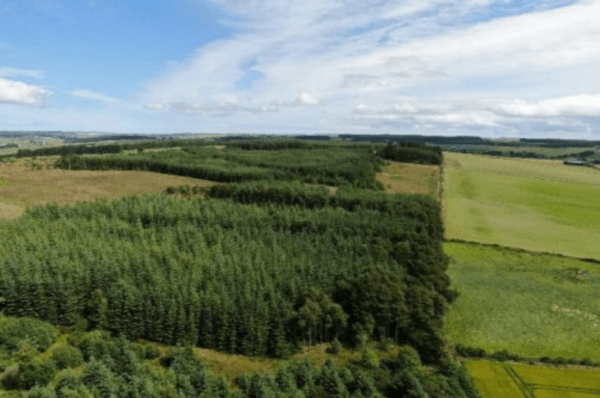My philosophy for asset-backed investment is built around three fundamental principles.
First, buy off-market and sell on-market to optimise the return.
Second, harness the inside knowledge of sector experts to help identify the most promising assets and realise the potential.
Last, but by no means least, ensure a fair deal for investors, advisers and the people who buy and use the assets we develop, nurture and sell. This helps to sustain the flow of capital and uphold our reputation as a company people want to do business with.
The fruits of this philosophy have consistently delivered through the economic cycle and I believe will be especially valuable at a time when capital and returns for investment managers are hard won. Here, I set out the rationale for this approach, how it works in practice and the tangible value it generates for our investors, for us as a business and for society as a whole.

I am a passionate advocate of asset-backed investment. I love the fact that the foundations are land and real estate, whose value is tangible and enduring. This is the opposite of the arcane financial engineering, upon which so much false hope can rest and fortunes be lost. I also love the fact that our asset-backed opportunities eliminates inheritance tax liabilities for our clients, while delivering steady returns and full control over their finances. It really is difficult to beat.
The big question is how to make asset-backed investments generate the required return.
Buy low, sell high is the obvious answer; but how to do this without taking excessive risk is far from straightforward. The other key consideration for us here at Stellar Asset Management is how to optimise the value for the investors who trust us with their money and deliver a great product for the people we serve directly and indirectly.
These consumers might be guests enjoying a stay in one of our hotels, the people who buy and live in the homes we build or the people who manage and work in the business premises we develop.
Sadly, I believe that both investors and consumers often get a raw deal from our competitors. For investors, this includes being exposed to needless risk or being denied a fair share of the investment returns. In turn, many fund managers take a backseat approach to managing these kinds of asset. For consumers, the result is often poorly targeted products or sub-standard quality.
Offering a fairer and more rewarding deal for investors and customers was therefore one of the main reasons why I set up Stellar and why I believe that we are so successful. This is clearly the right thing to do. It is also the smart thing to do. By maximising the upsides and sharing the benefits, we can win trust, strengthen our reputation and boost the flow of capital and investment opportunities.
So, how does our approach work in practice?
Buy off-market
We work with specialist joint venture partners with close knowledge of their sectors and local areas to help us select and manage our investments.
Our partners’ inside knowledge helps us to pinpoint targets with significant uplift potential and pursue bilateral off-market deals at favourable prices.
We set clear parameters for our partners in areas such as investment risk and target return to help protect the interests of our clients. Use of specialist partners also helps to contain fixed costs.

Think like a consumer
In selecting the investment target and judging how best to develop and uplift the asset, I believe the key is thinking like a consumer. What do customers want? Where is the biggest gap between supply and demand? How can we maximise the interest from potential buyers?
Our strategy for commercial real estate development highlights our distinctive approach. People often ask me why we focus on commercial space for SMEs rather than offices, retail or other high-end development. Our investment team regularly assesses all the various options. Invariably, development for SMEs comes out as the perfect niche. Why? SME units may not attract many architectural awards. But this is a vast, vibrant and largely underserved market. SMEs account for three-fifths of the employment and around half of turnover in the UK private sector. Yet, despite being the lifeblood of the British economy, all too many SMEs struggle to secure enough space to operate effectively and sustain growth. Many find themselves sitting on endless waiting lists for available space or being forced to make do with substandard premises with poor access to key customers and staff.
This shortage of SME units would in itself make this an attractive target for development investment. The diversity within this segment of the economy also creates a huge pool of potential occupiers. Many are likely to be owner-occupiers, which fits our strategy of development and sale. We are happy to offer short-term lets while units are being marketed for sale, but we do not want the cost and risk of being a long-term landlord.
By contrast, the ‘big shed’ warehouse developments we see springing up across the country open up the risk of putting all your eggs in one basket. After all, there are only a finite number of Amazons and their ilk who need that kind of capacity. In turn, the already risky retail and office markets have become even more unstable amid the rise of digital retail and hybrid working. Suitable urban sites are also expensive and come with high fitout, marketing and management costs.
Our approach to residential property development follows the same path as commercial. The UK faces a persistent shortage of housing, especially for people on middle incomes. People in this mid-market segment often find themselves squeezed between social housing that they do not qualify for and high-end developments that are outside their price reach. Our developments therefore target homes for people in this underserved and high demand income range. This is the segment where experience shows that the returns are steadiest and price fluctuations are lowest across the cycle.
Would we consider other segments? Developing luxury properties for Premiership footballers, overseas investors and other ultra-high net worth buyers can have an ‘all that glitters’ allure, but is in fact a highly volatile, highly personalised and often quite saturated market. A sign of this is how often bid prices are dropped or deals fall through altogether at the last minute. In turn, we do not invest in social housing as this would require us to be a full-time landlord with all the inherent risks and costs.
Control and spread the risks
Naturally, the needs and circumstances of our client base influence our investment strategy and risk appetite. In particular, as people come up to retirement, their focus shifts from wealth accumulation to wealth preservation. Therefore, they generally want to avoid any more than minimum risk. But neither do they want to see all their wealth languishing in low yield deposits and bonds. Ideally, they would like the kind of return that would help them to enjoy what could be 30 or even more years of retirement without eating into their capital. Accordingly, we set a realistic long-term target return – typically a 5% IRR.
The nature and selection of our asset-backed portfolio is an important part of this risk and reward balance. The assets we invest in qualify for Business Relief. Relief eliminates inheritance tax liabilities after just two years, rather than the standard seven for a gift or a trust. Unlike a trust, it also enables our clients to retain full control over their investments and the proceeds from them.
The foundations for investment security are the tangible assets of land and real estate. With no debt costs, moreover, the returns are unlevered. Yes, there is a reluctance in some quarters to embrace the kind of assets we invest in as they are unrated. But history shows that they are much less risky than an equity, bond or other rated instrument – the wealth preservation of the nation’s great landowning families attests to this.
Further protection comes from diversification. We diversify our portfolio across seven asset classes, which include hotels, golf clubs and care homes, all located in the UK. If one asset class is dipping in value, another will be coming up. For example, while our hotels were closed at the beginning of 2021, our investments in areas such as forestry, commercial and residential development continued to deliver above target returns.
Diversification also provides a cushion. So even when our hotels could not welcome guests, we were under no pressure to sell these assets at reduced prices like some businesses focusing solely on hospitality. Once our hotels were able to re-open, the staycation boom meant that occupancy and revenues quickly bounced back.
The other big advantage of our portfolio is non-correlation with financial markets. The performance of forestry over the past decade is a clear case in point. We began to acquire a forestry portfolio from around 2010 when timber and woodland sale prices were flat or falling. By 2020, when we began to sell, valuations and investor appetite for forestry had soared, enabling our agents to quickly secure buyers at prices that exceeded our target return. The double-digit IRR on the eight woodland sites we sold in 2020 and 2021 attest to this. We now see opportunities to build up our forestry portfolio once again, but following a new strategic path. This includes acquisition of land designated for forestry, but with no commercial tree planting prior to the sale.
Rigorous due diligence
Following identification of a potential target, we begin our rigorous due diligence process. If we look at commercial or residential development as an example, the assessment starts with evaluation by our development partners and independent surveyors. The sale is then reviewed by our investment committee. Both the selected site and the price need unanimous committee approval before the deal goes through. During development, both our investment team and independent surveyors carry out regular on-site evaluations to check on progress and costs. Third-party valuation may sometimes under-price the asset – the favourable recent sales of our farming assets reflect this. Nonetheless, these valuations offer a useful additional layer of insight and security.


Sell on-market
Once our job of developing and enhancing the assets is complete, we sell on-market to maximise the return. Typically, this would be through an agent or auction process.
Clearly, we want to sell at the opportune time. In 2021, for example, we were able to take advantage of the market upturn to sell Craigbeg Forest, a 170 hectare area of commercial woodland in Aberdeenshire, which we acquired in 2015, at a 25% IRR.
At the same time, we do not want to sit on an investment waiting for an optimum price that may take years or never come at all. We take the pragmatic view that all profit on sale is good. The strength of our investment pipeline also means that once an asset is sold, we can recycle the proceeds to acquire new opportunities and generate further return.
Living our vision
Our estate planning and investment management services help clients enjoy their retirement and make provision for their loved ones. Our clients put their faith in us. In response, we put advisers and their clients first – pure and simple. This intent is central to our investment philosophy. They motivate us as a team, clarify our order of priorities and guide how we treat others.
To know how important this is to me personally and why it guides my decisions, we need to go back to Stellar’s foundation. Before setting up Stellar in 2007, I had been making a comfortable living as a director in a leading merchant bank. I learned a lot there including the value of rigour, original thinking and hard work. But I myself was not comfortable. The market I worked in had become complacent – offering one-size-fits-all solutions that in reality fitted no-one. Companies were also putting their own interests before their investors. Most were reluctant to disclose let alone share the investment upsides, for instance. Few if any were taking proper care over costs, fees and delivering value for money.
I therefore wanted to create a company with a fair deal for investors at its heart. We offer flexible and innovative solutions that reflect the real needs and aspirations of clients and their families. Unlike many other firms, our asset backed investment returns are uncapped, so clients get their rightful share of the benefits when yields exceed target.
We take pride in delivering real value for money. From the outset, we set out a fee structure that is equitable and appropriate rather than copying what everyone else in the market is doing. We carefully control our costs and cut out needless waste through close monitoring and investment in the latest technology.
As part of our commitment to transparency, we disclose all our fees and provide clear and concise performance reporting so investors can see what they are paying for and the value we deliver in return. Following a review, we are now enhancing this by eliminating initial fees. We are also now looking to enhance our investor engagement and disclosure through a new and improved investor portal.
As a company that helps people build a better future for our clients, their children and their grandchildren, we are deeply conscious of what kind of world these future generations will live in. As part of this, we have always preferred to invest in tangible assets that support communities and employment – SME premises and housing development, for example. This is not just altruism. Supporting the real economy makes sound investment sense.
Sustainability is just as important. In March 2021, we signed up to the UN Principles on Responsible Investment (PRI). This is a journey that will take time to embed but we are fully committed. We also recognise that there are some areas of our investment portfolio over which we have no direct control. But we also are committed to continuous improvement.
People Power
I have talked a lot about my philosophy, but none of these ambitions could be realised without the great team I have around me. We want to attract professionals to share our values and enable them to share in the rewards in return. We want to provide a progressive and compelling workplace where everyone can be themselves and where everyone has a chance to shine.
Our investment in learning and development spans human skills such as communication and teamwork, as well as the all-important technical capabilities and professional qualifications needed to deliver excellence to investors. From this year, development is being augmented by a new leadership programme, with a particular focus on how to steer through times of complexity and change.
If our ultimate power is talent, then technology empowers our people. Harnessing artificial intelligence, data analytics and other advances in technology helps us gain richer and more precise insights into investor demands, investment opportunities and how to make the most of them.
Pride and passion
So as you can see, I believe that value and values are inexorably linked. I also believe that asset-backed does not mean sitting back – you need a sharp eye and market savvy to succeed. An important part of this is putting ourselves in our investors’ and consumers’ shoes – go the extra mile for them and we will prosper. By being able to provide the outcomes our clients require is hugely satisfying. It’s also a great source of satisfaction that we are giving back to society.
